WHY CHOOSE BEST COSMETIC HOSPITALS FOR COSMETIC PROCEDURES?
Choosing to undergo a cosmetic procedure is a major decision, and it’s important to select a trusted provider. Here’s why Best Cosmetic Hospitals stands out:

1. Personalized Treatment Plans: We believe that every patient is unique, and so are their aesthetic needs. That’s why we customize every procedure to match your specific goals. Our specialists work closely with you to ensure that the outcome is perfectly aligned with your vision, providing natural-looking results that complement your features.
2. Expertise and Innovation: Our team consists of world-renowned surgeons and aesthetic specialists who have extensive experience in performing a wide range of cosmetic procedures. With training from top global medical institutions, our experts are at the forefront of cosmetic surgery innovation, ensuring that you receive the best care available.
3. Advanced Technology: We use cutting-edge technology and the most advanced techniques in the industry to provide safe, effective procedures. From minimally invasive treatments that reduce recovery time to the latest laser and body-contouring technologies, our approach is rooted in precision and excellence.
4. Exceptional Care and Support: From your initial consultation to post-procedure follow-ups, we are committed to offering the highest level of care. Our comprehensive approach means we’re with you every step of the way, ensuring you feel informed, comfortable, and supported throughout your cosmetic journey.
5. Natural, Long-Lasting Results: Our procedures are designed to enhance your natural beauty, never to change who you are. Whether you’re undergoing surgery or a non-surgical treatment, we strive to deliver results that are harmonious with your natural features and long-lasting, allowing you to feel your best for years to come.
BEST POPULAR COSMETIC PROCEDURES
Our extensive range of cosmetic procedures ensures that you can find the right solution to meet your aesthetic goals. Here are some of the most popular procedures offered at Best Cosmetic Hospitals:
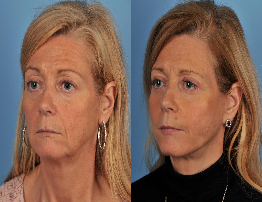
Face Lift
A Face Lift or rhytidectomy, is a cosmetic procedure designed to remove wrinkles from the face and neck in order to reduce the signs of aging. One gets a more youthful appearance by tightening the skin on the face and the neck. Results are best to those who have maintained some skin elasticity, though anyone with loose skin on the face or neck may consider getting a face lift in order to improve his or her overall appearance.
Procedure
The excess or loose skin from the chin, face, cheeks and neck are removed to give the face a "lift". Suitable incisions are made near the temple area and around the curves around the earlobe on both sides. Sometimes other suitable incisions are made below the chin in order to remodel the face. Metal clips hold the skin in place for the surgeon to get the desired effect before the incision is stitched. The procedure takes only two to three hours to complete, overnight stay in the hospital is advised.
As with any surgical procedure, there are potential side effects associated with the face lift surgery including bleeding, infection and scarring.
Liposuction and Body Contouring
Liposuction is designed to remove stubborn fat deposits from areas such as the abdomen, thighs, arms, and hips. It’s an excellent option for those looking to sculpt and refine their body shape. We also offer advanced body contouring procedures like VASER liposuction and laser-assisted liposuction, ensuring precise fat removal and faster recovery.
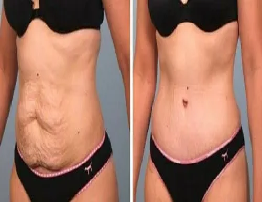
Procedure
Liposuction and body contouring are cosmetic procedures designed to remove excess fat and sculpt the body for a more defined and proportionate appearance. Liposuction involves the use of a thin tube (cannula) to suction out fat deposits from areas such as the abdomen, thighs, hips, arms, or neck. It is often combined with body contouring, which may include techniques like skin tightening or fat transfer to enhance the body’s natural shape and smoothness. These procedures are typically performed under local or general anesthesia, with a recovery period of a few weeks. Liposuction and body contouring offer long-lasting results when combined with a healthy lifestyle.
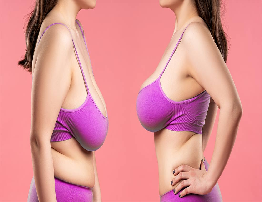
Breast Augmentation and Lifts
Breast augmentation helps women achieve fuller, more symmetrical breasts. Whether through implants or fat transfer, our breast enhancement procedures are personalized to achieve the desired size, shape, and proportion. We also offer breast lifts (mastopexy) for women seeking to restore youthful breast contours.
Procedure
Rhinoplasty, commonly known as nose surgery, is a cosmetic or functional surgical procedure designed to reshape or correct the nose. It can be performed to improve the appearance, such as refining the shape, size, or proportion of the nose, or to correct structural issues like a deviated septum, which may cause breathing problems. During the procedure, the surgeon makes incisions, often inside the nostrils or across the columella (the strip of tissue between the nostrils), to access and reshape the underlying bone and cartilage. Rhinoplasty is typically performed under general anesthesia, with a recovery period of several weeks, resulting in a more balanced and symmetrical facial appearance.
Rhinoplasty (Nose Surgery)
Rhinoplasty is a highly specialized procedure that reshapes the nose for both aesthetic and functional improvements. Whether you want to refine the shape of your nose or correct breathing issues, our expert surgeons deliver results that balance facial harmony and improve nasal function.
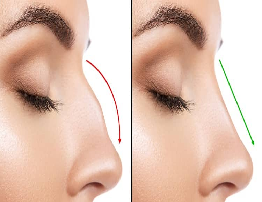
Procedure
Rhinoplasty, commonly known as nose surgery, is a cosmetic or functional surgical procedure designed to reshape or correct the nose. It can be performed to improve the appearance, such as refining the shape, size, or proportion of the nose, or to correct structural issues like a deviated septum, which may cause breathing problems. During the procedure, the surgeon makes incisions, often inside the nostrils or across the columella (the strip of tissue between the nostrils), to access and reshape the underlying bone and cartilage. Rhinoplasty is typically performed under general anesthesia, with a recovery period of several weeks, resulting in a more balanced and symmetrical facial appearance.
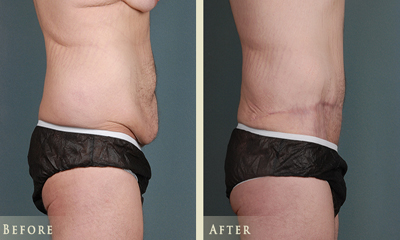
Non-Surgical Procedures (Botox, Fillers, and Laser Therapy)
For those seeking a less invasive way to rejuvenate their appearance, we offer a wide array of non-surgical treatments. From Botox and dermal fillers to laser skin resurfacing and IPL therapy, these treatments are designed to reduce the appearance of wrinkles, improve skin tone, and provide subtle enhancements with little to no downtime.
Procedure
Non-surgical cosmetic procedures like Botox, dermal fillers, and laser therapy are popular treatments to address signs of aging and improve skin appearance without the need for surgery. Botox involves injecting a purified toxin to temporarily relax muscles, reducing wrinkles and fine lines. Dermal fillers are injected into the skin to restore volume, plump lips, and smooth deep wrinkles. Laser therapy uses focused light energy to resurface the skin, reduce pigmentation, or stimulate collagen production for a more youthful look. These procedures are quick, minimally invasive, with little to no downtime, making them convenient options for facial rejuvenation. Multiple sessions may be required for optimal results.
Tummy Tuck
A tummy tuck or abdominoplasty helps gets rid of loose or wrinkled skin and is the most effective way tummy tuck or abdominoplasty helps gets rid of loose or wrinkled skinto tighten your stomach area. Stretch marks between the belly button and pubic hair are eliminated along with any fat tissue in the lower abdomen. The abdominal wall muscles are tightened so that even when sitting down or bending over the abdomen doesn't stick out.
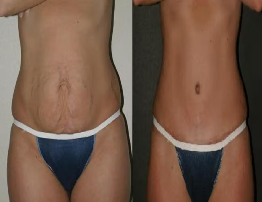
Abdominal wall deformities can be classified into three:
▣ Loose or wrinkly skin, stretch marks due to ageing, pregnancy or excess weight
loss
▣ Fat tissue in the lower abdomen
▣ Muscle separation, which can occur by itself or as a result of pregnancy
Though Liposuction takes care of excess fat tissue, loose skin and stretch marks need to be addressed by dermatolipectomy, mini-tummy tuck or full tummy tuck. The tummy tuck addresses the three components of your abdomen: the skin, fat and muscle. Most notable is the fact that work is done to tighten the muscles, which will benefit women who want as flat a stomach as possible . Results, especially when combined with liposuction of the flanks are dramatic. A mini tummy tuck is best suited for women who don't have stretch marks or saggy skin but have a pouch below the belly button. It can be done through an incision in the belly button, or through a C section scar if excess skin need to be taken off.
Procedure
The procedure is not a good skin tightening procedure. Tummy Tuck or Abdominoplasty helps gets rid of loose or Wrinkled Skin
It can only tighten a limited area directly above the pubic mound. If you try to tighten more, you end up extending the scar sideways and you get a longer scar that is no longer well hidden and still not the amount of tightening that will make you happy.
▣ It really doesn't take care of stretch marks
▣ It does not take care of any muscle wall separation above the belly button
TIPS TO RECOVER FROM COSMETIC PROCEDURES
Recovery is an essential part of any cosmetic procedure, and following the right steps can help you heal faster and achieve the best results. Here are some tips:
Follow Post-Operative Instructions:: Carefully adhere to all aftercare guidelines provided by your surgeon. This includes taking prescribed medications, avoiding certain activities, and following wound care protocols.
Rest and Hydration: Proper rest is crucial for recovery. Ensure you get plenty of sleep and drink ample water to stay hydrated and support your body’s healing process.
Avoid Strenuous Activities: Depending on your procedure, you may need to avoid heavy lifting or strenuous exercise for a period. Follow your surgeon’s advice to prevent complications.
Use Sunscreen: For facial procedures, protect your healing skin from UV damage by using sunscreen with high SPF. This helps prevent hyperpigmentation and promotes smoother healing.
Stay in Contact: If you notice any unusual symptoms or have concerns during your recovery, don’t hesitate to reach out to your healthcare provider.
ASSOCIATED RISKS OF COSMETIC PROCEDURES
While cosmetic procedures are generally safe, it’s essential to be aware of the associated risks. Some potential risks include:
Infection: Surgical procedures carry a small risk of infection. This can usually be prevented by following proper post-operative care.
Scarring: Surgical procedures may result in some scarring, though we aim to minimize visible scars by placing incisions in discreet locations.
Bruising and Swelling: Temporary bruising and swelling are common after both surgical and non-surgical procedures. These typically subside within a few days to weeks.
Anesthesia Complications: There is a low risk of complications from anesthesia, particularly for more extensive procedures. Your surgeon will discuss these risks during your consultation.
Unsatisfactory Results: While rare, some patients may feel their results do not fully meet their expectations. This is why it’s crucial to have a thorough consultation and realistic goals.
ADVANTAGES OF COSMETIC PROCEDURES
Despite potential risks and disadvantages, the advantages of cosmetic procedures can significantly improve your quality of life:
Enhanced Confidence: Achieving your desired aesthetic goals can lead to a significant boost in self-esteem and confidence, improving your personal and professional life.
Long-Lasting Results: Many cosmetic procedures, especially surgical ones, offer long-lasting or even permanent results, reducing the need for further treatments.
Customized Solutions: Every procedure is tailored to your unique needs, ensuring that the results align with your vision and enhance your natural beauty.
Non-Invasive Options: Advances in technology have made it possible to achieve dramatic results with minimally invasive or non-surgical procedures, offering less downtime and fewer risks.
DISADVANTAGES OF COSMETIC PROCEDURES
Though cosmetic procedures offer transformative results, there are potential disadvantages to consider:
Downtime: Many surgical procedures require a recovery period during which normal activities may be restricted.
Costs: Cosmetic procedures can be expensive, particularly when multiple treatments are involved, and they are generally not covered by insurance.
Temporary Results for Non-Surgical Options: Non-surgical treatments like Botox or fillers offer temporary improvements and will require ongoing treatments for maintenance.
Potential Risks: As with any medical procedure, there are potential risks such as infection, scarring, and complications related to anesthesia.
BEGIN YOUR TRANSFORMATION AT BEST COSMETIC HOSPITALS
At Best Cosmetic Hospitals, we’re here to help you take the first step toward achieving your aesthetic goals. Whether you’re considering a subtle enhancement or a full transformation, our team of experts is committed to providing exceptional care, personalized treatment plans, and natural-looking results.